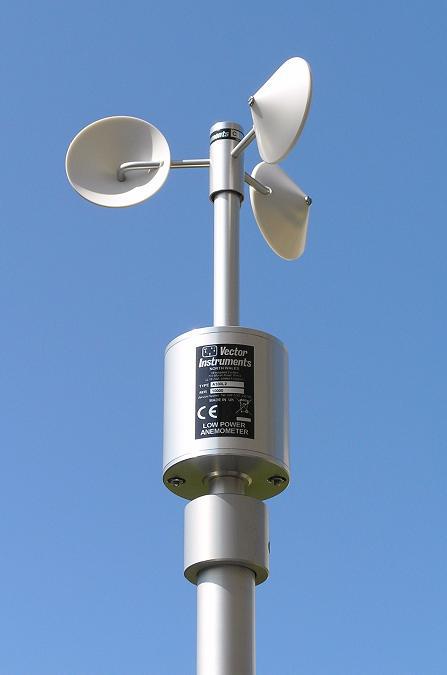The Duty of an Anemometer in Improving Safety for Outdoor Activities
The Duty of an Anemometer in Improving Safety for Outdoor Activities
Blog Article
Checking Out the Features and Advantages of Anemometers for Climate Lovers and Professionals
Anemometers stand as instrumental devices in the world of weather condition surveillance, accommodating both fanatics and skilled experts alike. These devices use a window right into the dynamic globe of wind patterns and speeds, providing invaluable data for atmospheric analysis and projecting. From mug anemometers to sonic anemometers, each type brings its unique collection of applications and advantages, clarifying numerous aspects of weather. As we explore the functions and advantages of anemometers, a much deeper understanding arises not just of dominating climate sensations but also of the broader implications for sectors like wind power production and ecological research study.
Value of Anemometers in Weather Surveillance
Anemometers play a vital function in climate monitoring by supplying precise dimensions of wind speed, assisting in forecasting and understanding climate patterns. These instruments, varying from traditional mug anemometers to modern ultrasonic anemometers, are essential for meteorologists, researchers, and climate lovers alike. By gauging wind speed, anemometers assist in identifying the strength of weather sensations such as storms, storms, and twisters. In addition, they give beneficial information for aeronautics, maritime procedures, and numerous sectors that are delicate to wind conditions.

Sorts Of Anemometers and Their Applications
The most common kinds of anemometers include mug anemometers, vane anemometers, hot-wire anemometers, and ultrasonic anemometers. Cup anemometers are composed of three or four mugs mounted on straight arms that turn with the wind, measuring its speed. Vane anemometers, on the various other hand, utilize a freely rotating vane to align with the wind direction, supplying both wind speed and instructions dimensions.
Mug anemometers are suitable and robust for general climate tracking, while vane anemometers are favored for directional dimensions. Ultrasonic anemometers are non-intrusive and provide high accuracy, typically used in study and specialized weather surveillance applications.
Benefits of Using Anemometers in Forecasting
In weather forecasting, the use of anemometers provides indispensable benefits for enhancing the accuracy of weather condition projecting. Anemometers measure wind speed and direction, giving vital data for forecasting weather condition patterns. By incorporating wind information into projecting designs, meteorologists can better recognize the movement of climate systems, anticipate modifications in climatic conditions, and issue extra exact forecasts.
Furthermore, anemometers play a vital duty in analyzing prospective weather hazards. Keeping track of wind speeds aids forecasters anticipate severe climate events such as hurricanes, hurricanes, and winter season click to read storms with higher accuracy. This very early warning system enables authorities to release timely alerts and implement needed security measures, minimizing the risks to life and building.
In addition, anemometers assist in maximizing renewable resource manufacturing. By examining wind patterns, meteorologists can recognize ideal areas for wind farms and predict energy outcome, adding to the effective generation of wind power.

Anemometers in Wind Power Production
Provided the vital role anemometers play in offering accurate wind information for climate forecasting and danger evaluation, their value reaches the world of wind power production. Anemometers are essential tools in the field of wind energy, where the dimension of wind rate and direction is crucial for determining the feasibility and performance of wind turbine setups. By properly gauging wind speeds at varying elevations, anemometers help optimize the positioning and design of wind turbines to make best use of energy outcome.
In wind farms, anemometers are tactically positioned to collect real-time wind data that is utilized to analyze the potential power manufacturing of a site. This data is important in establishing the economic feasibility of wind energy jobs and in projecting power generation to make sure grid security. In addition, anemometers help in keeping track of wind problems to enhance turbine performance, stop damage from high winds, and guarantee the safety and security of workers operating in the area of wind turbines.
Enhancing Weather Condition Understanding With Anemometers

Anemometers play a key role in enhancing our understanding of microclimates. These local climate condition can vary considerably from wider regional projections, making it necessary to have exact data for specific areas. anemometer. By strategically placing anemometers in various areas, scientists can collect thorough web details on how wind acts in various terrains, urban atmospheres, or bodies of water
Moreover, anemometers add to enhancing weather condition projecting designs by supplying real-time information on wind actions. This information is especially important for forecasting extreme weather events, maximizing farming practices, and sustaining sectors like aeronautics and maritime navigation. In general, anemometers are vital tools that allow us to delve much deeper right into the complexities of weather systems, ultimately causing more better-informed decisions and precise predictions.
Conclusion
In conclusion, anemometers play a crucial duty in weather condition tracking and forecasting by determining wind speed and direction. Anemometers additionally informative post have applications in wind power production, further highlighting their relevance in both weather forecasting and renewable energy industries.
From cup anemometers to sonic anemometers, each type brings its special collection of benefits and applications, losing light on various aspects of atmospheric conditions. These instruments, ranging from conventional cup anemometers to contemporary ultrasonic anemometers, are crucial for meteorologists, scientists, and weather enthusiasts alike. The most common types of anemometers include cup anemometers, vane anemometers, hot-wire anemometers, and ultrasonic anemometers. Mug anemometers are durable and ideal for basic climate monitoring, while vane anemometers are preferred for directional measurements. Anemometers are vital tools in the field of wind energy, where the measurement of wind rate and instructions is crucial for figuring out the usefulness and efficiency of wind turbine installations.
Report this page